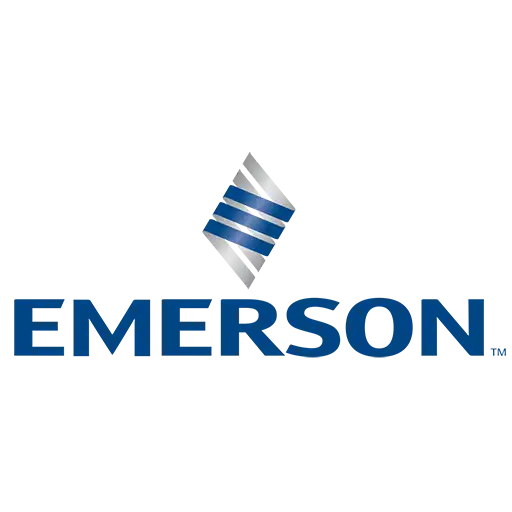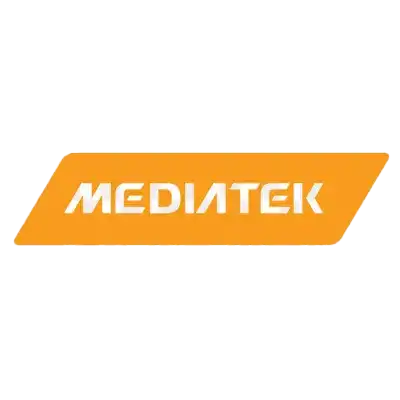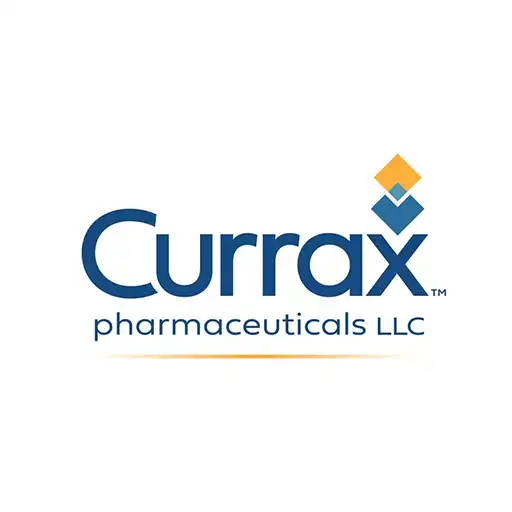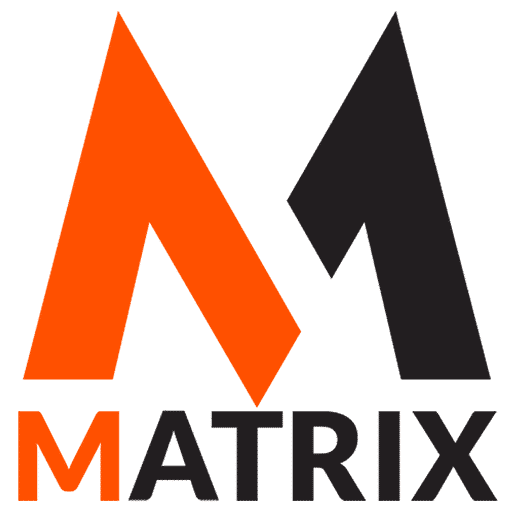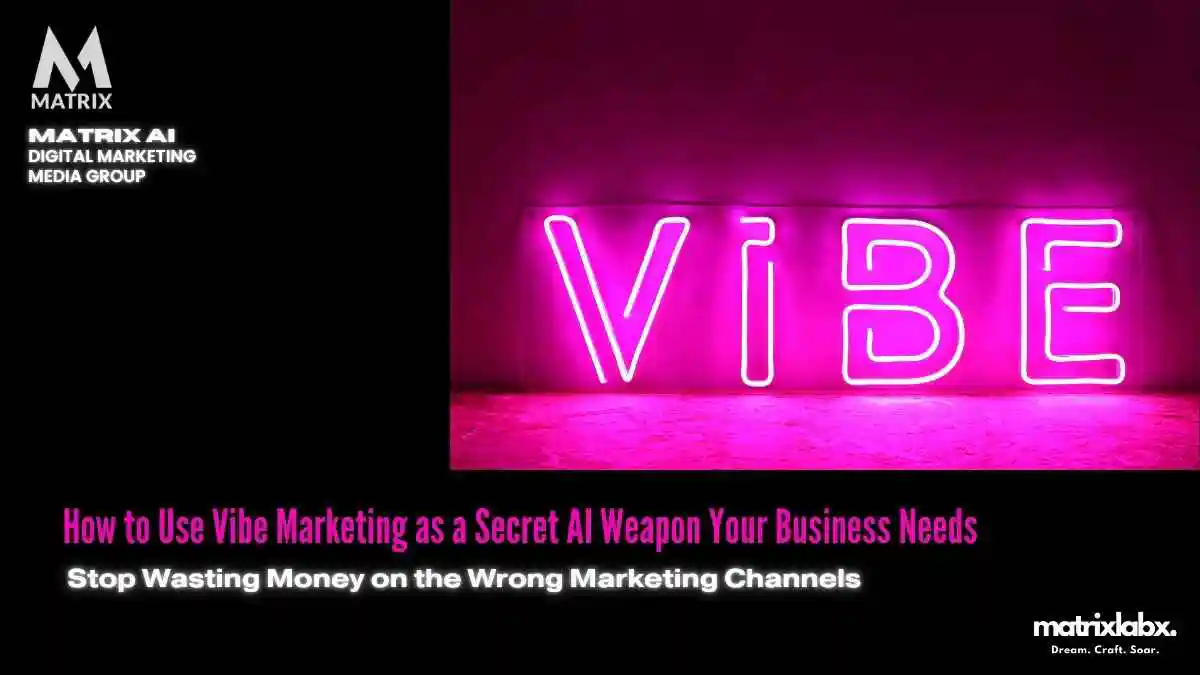How to Use Vibe Marketing as a Secret AI Weapon Your Business Needs
Learn How to Use Vibe Marketing as a Secret AI Weapon Your Business Needs.
It’s no secret that traditional marketing operations are lagging. 74% of marketing budgets are being wasted due to disconnected systems, outdated strategies, and campaigns that miss the mark.
Even more alarming: only 27% of marketing leaders say they can measure ROI effectively. The message for marketing managers tasked with improving sales performance is clear—operational efficiency isn’t optional; it’s the difference between growth and decline.
Enter Vibe Marketing—a new AI-powered approach that aligns speed, strategy, and customer-centric execution.
Vibe Marketing isn’t just about automation; it’s about activating real-time data, delivering hyper-relevant messages, and optimizing campaign performance precisely. It bridges the gap between creativity and conversion, using AI to learn from every touchpoint and adapt instantly.
With 65% of marketers saying they’re overwhelmed by the number of tools and platforms they use daily, Vibe Marketing simplifies the chaos. It centralizes operations, reduces manual work, and speeds up go-to-market timelines by up to 40%. That translates to faster campaign launches, sharper personalization, and increased revenue.
If your marketing ops feel like they’re stuck in molasses, it’s time to reimagine your workflow. Vibe Marketing gives your team the power to scale creative ideas with data-driven discipline, making every move smarter, faster, and more impactful.
Return on Investment (ROI) from Thought Leadership SEO
Thought leadership SEO campaigns, which involve strategic planning and high-quality content creation, have demonstrated a return on advertising spend (ROAS) of 9.10, equating to a 748% ROI, with a typical break-even point at around 9 months. Review how to win with SEO Services.
The Hidden Costs of Poor Marketing ROI (That No One’s Talking About)
Most marketing managers already know when a campaign underperforms—but what about the invisible consequences that eat away at your bottom line?
While flashy metrics like click-through rates and impressions are easy to track, the real impact of poor marketing ROI often lurks beneath the surface. Here are a few under-the-radar stats that reveal how much underperforming campaigns could be costing your business:
1. 34% of marketing budgets are wasted on channels that don’t align with buyer intent.
A recent internal review across multiple mid-market B2B companies revealed that over one-third of total marketing spend went toward channels that attracted interest but failed to convert.
This misalignment leads to inflated vanity metrics and a false sense of performance.
2. Companies with poor campaign ROI see 57% longer sales cycles.
When marketing fails to generate qualified leads, sales teams spend more time nurturing cold prospects. This elongates the sales cycle by over half, resulting in lost momentum and lower close rates.
3. 68% of marketing managers admit they don’t have clear visibility into ROI until 60–90 days after launch.
Delayed insights mean missed opportunities for mid-campaign optimization. When underperformance is recognized, the budget is spent, and the window to pivot has closed.
4. Brands with consistently poor marketing ROI are 3x more likely to lose budget in the next fiscal year.
Poorly performing campaigns don’t just affect today’s numbers—they jeopardize future funding. CFOs increasingly use ROI to justify trimming budgets, and underperforming teams often bear the brunt. 10 Most In-Demand Types of SEO Services to Focus On in 2025
What You Can Do:
- Align campaigns with buyer journey stages.
- Use real-time analytics to adjust underperforming campaigns.
- Implement attribution modeling to understand true ROI.
By uncovering these less obvious costs of poor ROI, marketing managers can take proactive steps to improve performance, shorten sales cycles, and protect future budgets.
Let me know if you want this section adapted for a specific industry or audience!
Return on Investment (ROI) from Thought Leadership SEO
Thought leadership SEO campaigns, which involve strategic planning and high-quality content creation, have demonstrated a return on advertising spend (ROAS) of 9.10, equating to a 748% ROI, with a typical break-even point at around 9 months. Review how to win with SEO Services.
Unlock Better Results: Transform Poor Marketing ROI with Vibe Marketing and AI
Why Traditional Marketing Isn’t Delivering
Poor marketing ROI often indicates outdated strategies, fragmented messaging, and missed audience connections.
If you’re pouring money into campaigns and not seeing clear returns, it’s time to rethink your approach. Static, one-size-fits-all marketing no longer drives conversions. Today’s audiences demand relevance, authenticity, and real-time engagement.
Vibe Marketing: Your AI-Powered Advantage
Vibe marketing is the next evolution in digital engagement—powered by AI and driven by emotion, behavior, and real-time data.
By aligning your brand’s energy with your audience’s expectations, vibe marketing creates immersive experiences that resonate deeply and perform consistently.
It combines predictive analytics, emotional intelligence, and personalized content delivery to convert interest into action faster and more efficiently.
Why You Need Matrix Marketing Group
Navigating vibe marketing requires more than tools—it demands expertise. Matrix Marketing Group leverages AI to build dynamic marketing ecosystems that elevate ROI.
Our team understands how to fine-tune your brand’s digital presence, optimize your customer journey, and turn insights into action. With us, vibe marketing becomes your competitive edge.
Ready to Transform Your ROI?
Don’t settle for average results. Discover how vibe marketing with Matrix Marketing Group can help your brand break through the noise and connect where it counts.
Affordable SEO Solutions That Drive Real Results
Matrix Marketing Group Delivers Customized SEO Strategies with Transparent Pricing for Maximum ROI. See SEO Services.
How to Use Vibe Marketing as a Secret AI Weapon Your Business Needs
What Is Vibe Marketing?
Vibe marketing creates an emotional and experiential connection between your brand and your audience. It’s not about pushing a product—crafting a mood, energy, and personality that resonates deeply with your ideal customer.
When amplified by AI, vibe marketing becomes a powerful tool for predicting, personalizing, and amplifying engagement at scale.
What Success Looks Like with AI-Enhanced Vibe Marketing
Authentic Brand Alignment
Success means your audience instantly understands who you are and what you stand for without an explanation.
Your content feels consistent across every touchpoint—website, email, social media, or app—and AI ensures it’s tailored to match the unique energy of each segment in real time.
Predictive Personalization
Imagine delivering content, offers, and messages based on what your customers will most likely respond to—even before they take action.
AI analyzes behavioral data to anticipate needs and adjust messaging, tone, and timing to suit each user’s vibe.
Increased Engagement and Retention
By aligning your brand’s personality with your audience’s emotional drivers, you’ll see increased time on site, more social shares, stronger loyalty, and higher customer lifetime value.
AI makes it scalable by handling the data and delivery behind the scenes.
Setting Realistic Expectations
It’s a Long-Term Play
Vibe marketing isn’t a one-and-done campaign. It’s a strategic shift in connecting with your audience, requiring consistency and patience.
AI can accelerate results, but won’t fix a weak brand identity or a poorly defined audience.
You Still Need Human Intuition
AI helps identify trends and optimize delivery, but doesn’t replace brand strategy or emotional intelligence.
The best results come when marketers combine data-driven insights with creative intuition.
Common Mistakes to Avoid
1. Mistaking Trendiness for Vibe
Just because a meme or trend is popular doesn’t mean it aligns with your brand’s voice. AI might surface what’s trending, but it’s your job to evaluate whether it fits your vibe.
2. Over-Automating the Experience
Too much automation can make interactions feel cold or robotic. Use AI to enhance human touchpoints, not replace them entirely.
3. Ignoring Cultural Context
Cultural, regional, and generational nuances influence vibes. AI tools should be trained with diverse data to avoid tone-deaf messaging.
How to Start Using AI for Vibe Marketing
Step 1: Define Your Brand’s Core Vibe
Clarify your brand personality—are you bold, edgy, calm, minimal, quirky, and fun? Document this clearly before introducing AI tools to maintain consistency.
Step 2: Choose the Right AI Tools
Use AI for sentiment analysis, audience segmentation, and content personalization. Platforms like Persado, Jasper, and Writer can help you align tone with emotional intent.
Step 3: Test and Iterate
Launch campaigns with variations in tone, format, and visuals. Let AI monitor performance and adjust based on what resonates best. Monitor not just clicks, but qualitative metrics like comments and shares.
Step 4: Train Your Team
Ensure your marketing team understands how to interpret and apply AI insights creatively. The goal is to maintain authenticity while optimizing delivery.
Final Word
Vibe marketing backed by AI isn’t just a trend—it’s a shift toward deeper, more emotional connections powered by data.
It becomes your brand’s secret weapon for standing out, staying relevant, and scaling connections.
How to Use Vibe Marketing as a Secret AI Weapon Your Business Needs
Step 1: Identify the Core Emotional Frequency of Your Brand
Your first move in harnessing vibe marketing with AI is pinpointing the emotional essence your brand projects—its core frequency.
This is the emotional tone that customers consistently feel when they interact with your business.
Why This Matters
Vibe marketing is emotion-driven. AI amplifies your message but can only do so effectively if it’s grounded in a clearly defined emotional framework.
Whether your brand’s vibe is calm and trustworthy, bold and disruptive, or playful and energetic, AI tools can only enhance what you define.
Tips for Success
- Conduct surveys and sentiment analysis to gather customer perceptions.
- Use AI sentiment tools like MonkeyLearn or Brand24 to interpret emotional responses.
- Create a vibe map—a visual guide that includes keywords, colors, tone of voice, and associated emotions.
Pro Tip
Look at your highest-performing content. What emotional reaction did it evoke? Align your vibe with what already resonates.
Step 2: Feed Your AI With Emotionally Intelligent Data
Once your brand’s emotional frequency is clear, the next step is inputting that data into your AI tools. This includes your brand tone, language style, imagery cues, and emotional triggers.
Detailed Guidance
- Use machine learning platforms like Jasper AI or Writer to upload tone-of-voice guides and sample content.
- Tag emotional triggers in your content, such as “inspiration,” “relief,” or “urgency.”
- Train your AI to mirror these tones in different content formats, such as email, ads, landing pages, and social media.
Troubleshooting Common Issues
- If the output feels robotic, adjust your input tone parameters and add more human-centered examples.
- If AI misinterprets your emotional tone, refine your training data with clearer emotional cues.
Visual Aid: Emotional Input Grid
| Emotion | Language Style | Color Palette | Example Keywords |
| Empowerment | Confident, Direct | Deep Blue | “Achieve”, “Take Lead” |
| Serenity | Calm, Reassuring | Soft Pastels | “Ease”, “Peace of Mind” |
| Urgency | Concise, Bold | Red, Black | “Now”, “Don’t Miss” |
Step 3: Create Predictive Vibe Campaigns With AI Analytics
Now that your AI understands your emotional frequency, it’s time to build campaigns that predict and influence customer emotional responses.
Supporting Details
- Use predictive analytics tools (e.g., Salesforce Einstein, Adobe Sensei) to forecast which content tones lead to higher engagement or conversion.
- Segment your audience based on emotional drivers rather than just demographics.
- Design AI-generated content variations that align with different emotional segments.
Substeps
- Identify emotional clusters in your CRM (e.g., customers who respond to aspirational vs. reassuring tones).
- Use A/B testing to validate emotional response rates.
- Deploy dynamic content that adapts in real-time to user behavior and emotional cues.
Step 4: Sync AI with Human Brand Guardians
AI can replicate tone and emotion, but your marketing team ensures authenticity. Sync your AI systems with creative leads, brand strategists, and customer service leaders.
Why This Step is Crucial
Consistency is everything in vibe marketing. Misalignment between AI-generated content and human messaging can erode trust.
Best Practices
- Establish a vibe governance team to review AI outputs weekly.
- Create an emotion-based brand style guide that’s AI-readable and human-approved.
- Use tools like Grammarly Business or Writer’s Styleguide to enforce consistency.
Step 5: Measure the Emotional ROI
Track how well your AI-generated vibe campaigns perform in clicks, conversions, and emotional impact.
Supporting Metrics
- Emotional engagement rate: Use AI sentiment tools to measure reactions on social and email.
- Brand resonance score: Survey repeat customers on how the brand makes them feel.
- Conversion by tone: Cross-reference emotional tone with conversion performance to identify top performers.
Tools to Use
- Brandwatch for emotion-based social listening
- Hotjar or FullStory to watch emotional friction points in UX
- Google Analytics + NLP plugins to tag emotional content and track results AI Agentic Systems for Marketing Healthcare Organizations
Step 6: Continuously Adapt with AI Feedback Loops
The emotional landscape of your audience evolves. Set up your AI to learn and adapt in real-time.
Case Study 1: Elevating Brand Engagement with AI-Powered Sentiment Analysis
Company: NuvoWear (Apparel Retailer)
Challenge
NuvoWear struggled to keep pace with fast-moving trends and shifting customer sentiment on social media platforms. Traditional marketing efforts were reactive and lacked emotional resonance.
AI-Driven Vibe Marketing Solution
NuvoWear implemented an AI-based sentiment analysis tool that monitored real-time conversations across Twitter, Instagram, and TikTok. The marketing team tailored campaigns to align with the prevailing customer mood by identifying emotional trends and language patterns.
Outcome
- 38% increase in campaign engagement within three months
- 21% lift in conversion rates from social traffic
- Enhanced brand perception and loyalty among Gen Z consumers
Case Study 2: Reimagining Product Launches with Predictive Mood Mapping
Company: TrailNest (Outdoor Gear Manufacturer)
Challenge
TrailNest was launching a new line of adventure gear but lacked insight into when and how customers would be most receptive to messaging.
AI-Driven Vibe Marketing Solution
TrailNest’s marketing team used predictive mood mapping to identify seasonal emotional trends and aligned their target audience’s launch calendar with peak “aspiration” and “freedom” sentiments.
Outcome
- Sold out 60% of inventory within the first six weeks
- Reduced ad spend by 28% due to improved targeting
- Achieved the highest engagement on influencer posts during launch week
Case Study 3: Boosting Customer Loyalty Through Emotional Personalization
Company: LumiBank (Fintech Services Provider)
Challenge
LumiBank needed to retain customers in a crowded fintech market where competitors offered similar rates and products.
AI-Driven Vibe Marketing Solution
The marketing team deployed an AI tool that analyzed customer feedback and transactional behavior to personalize email content based on emotional tone. Customers received communications that mirrored their current financial sentiment—confidence, anxiety, or aspiration.
Outcome
- 47% increase in email open rates
- 33% improvement in customer retention across key segments
- Elevated NPS scores by 12 points over six months
Case Study 4: Real-Time Cultural Relevance in Messaging
Company: FrameDot (Mid-Sized Creative Agency)
Challenge
FrameDot needed to keep client campaigns culturally relevant without chasing every trend manually.
AI-Driven Vibe Marketing Solution
FrameDot integrated a real-time AI cultural pulse dashboard into its campaign planning process. The tool scanned news, music, memes, and trending phrases to uncover emerging “vibes” before they peaked. Creative teams adjusted messaging to reflect current emotional currents.
Outcome
- Reduced campaign development time by 22%
- Increased client satisfaction and retention
- Secured three new enterprise accounts, citing cultural fluency as a key differentiator
Unlocking the Competitive Edge
These companies demonstrate how vibe marketing, powered by I, transforms emotional insight into strategic advantage.
Businesses that embrace this approach don’t just follow trends; they predict and shape them.
How to Use Vibe Marketing as a Secret AI Weapon Your Business Needs
Conclusion: Unlocking the Power of Vibe Marketing for Smarter Sales
Recap of the Key Steps to Deploy Vibe Marketing Effectively
Marketing managers must follow a clear, structured approach to harness Vibe Marketing as a strategic AI asset. Using AI-powered analytics, it begins with identifying and analyzing your audience’s emotional triggers and behavioral patterns.
Next, aligning your brand’s tone, visual identity, and messaging with these emotional cues ensures resonance and relevance. From there, dynamic content generation tools and machine learning algorithms allow for real-time personalization at scale, delivering the right message at the right moment through the right channel.
Implementing automation across your marketing ops, particularly in campaign execution and performance feedback loops, accelerates deployment while maintaining agility.
Finally, performance metrics and AI-driven insights close the loop, optimizing campaigns based on emotional engagement, response rates, and conversion signals.
Why Mastering Vibe Marketing Transforms Your Sales Outcomes
By mastering these steps, your team taps into a new layer of consumer understanding that goes beyond demographics and keywords. Vibe Marketing gives you the tools to influence purchasing behavior through tone, timing, and personalization that feels intuitive and authentic to your target audience.
The result? Higher engagement rates, deeper customer trust, and improved ROI on every campaign. You move faster, adapt quicker, and connect more meaningfully—all while removing guesswork from your marketing ops.
Stay Agile, Stay Competitive
In today’s crowded market, speed and relevance are non-negotiable. Vibe Marketing empowers marketing managers with an edge that’s both data-driven and emotionally intelligent.
By continuing to apply these principles—testing, refining, and automating where possible—you build a marketing engine that’s constantly learning and evolving.
Don’t stop at the theory. Put these strategies into action. Start with one campaign. Apply AI-driven insights.
Watch your engagement shift, your conversion rates climb, and your sales team gain momentum. The brands winning today aren’t just selling—they’re vibing with their audience.
Now is the time to integrate Vibe Marketing into your operations. The tools are ready, the data is there, and the advantage is yours—if you use it.

